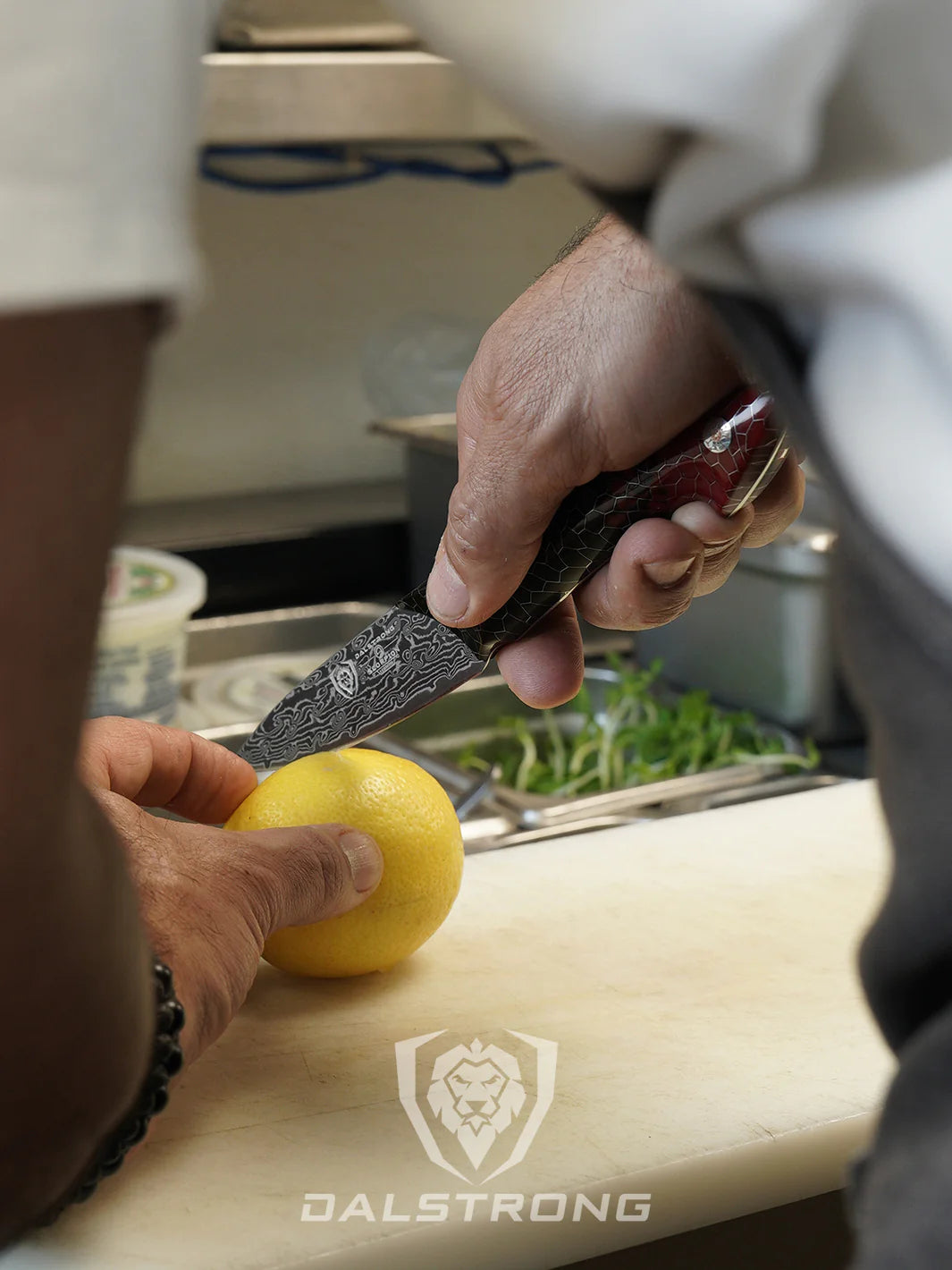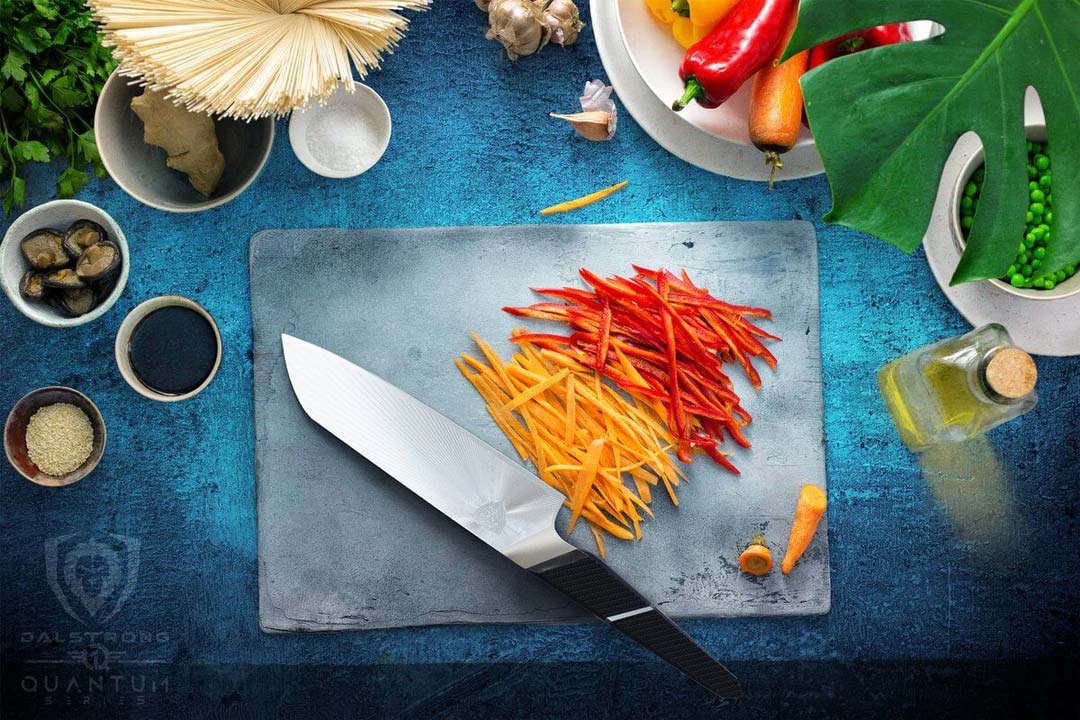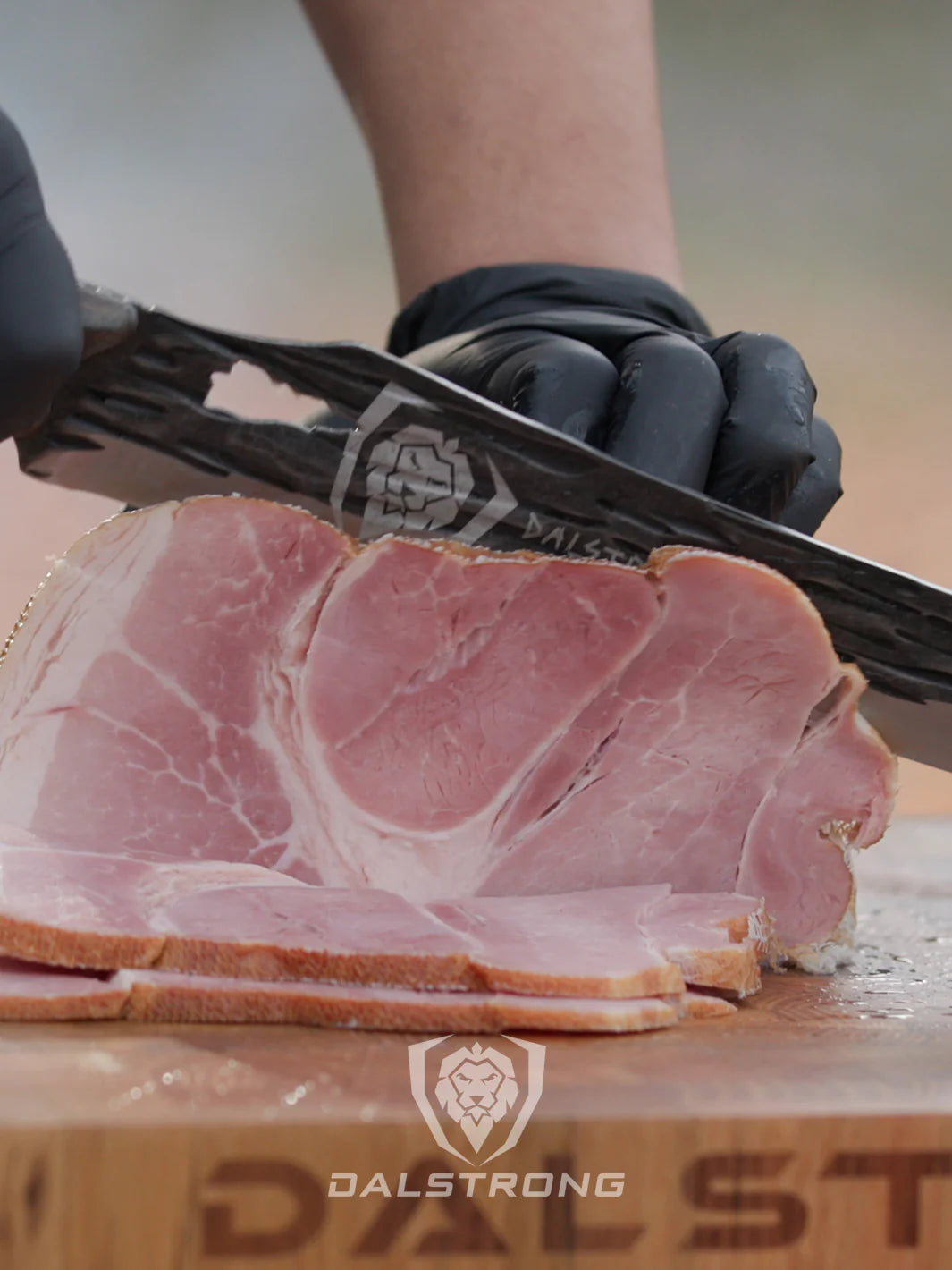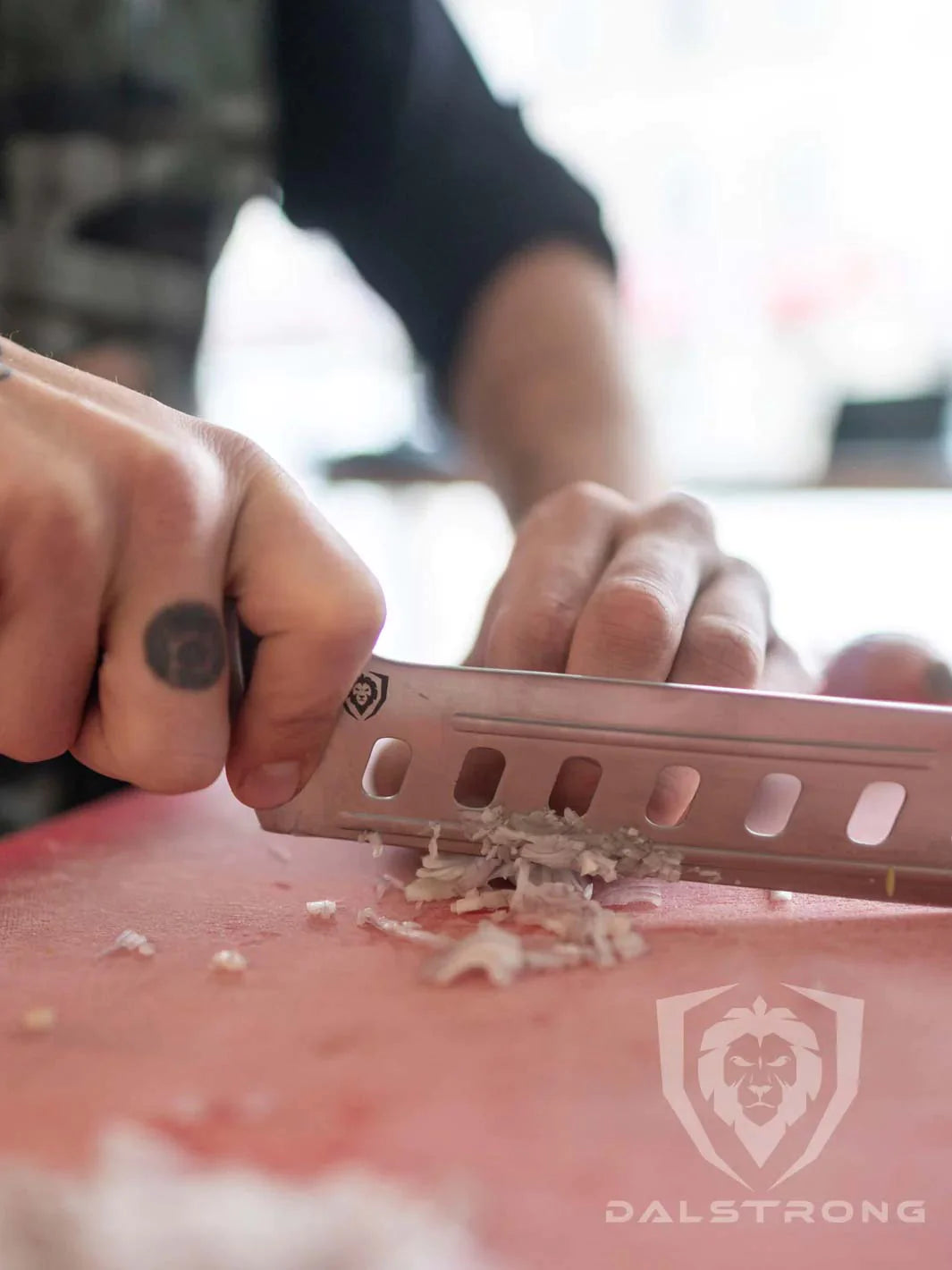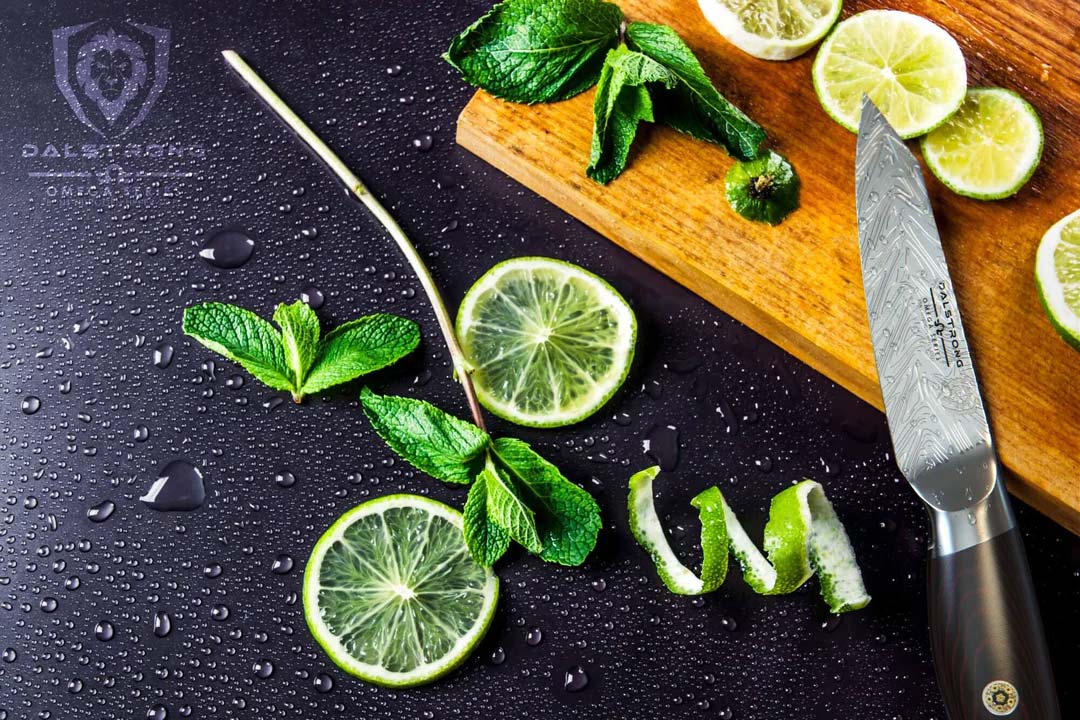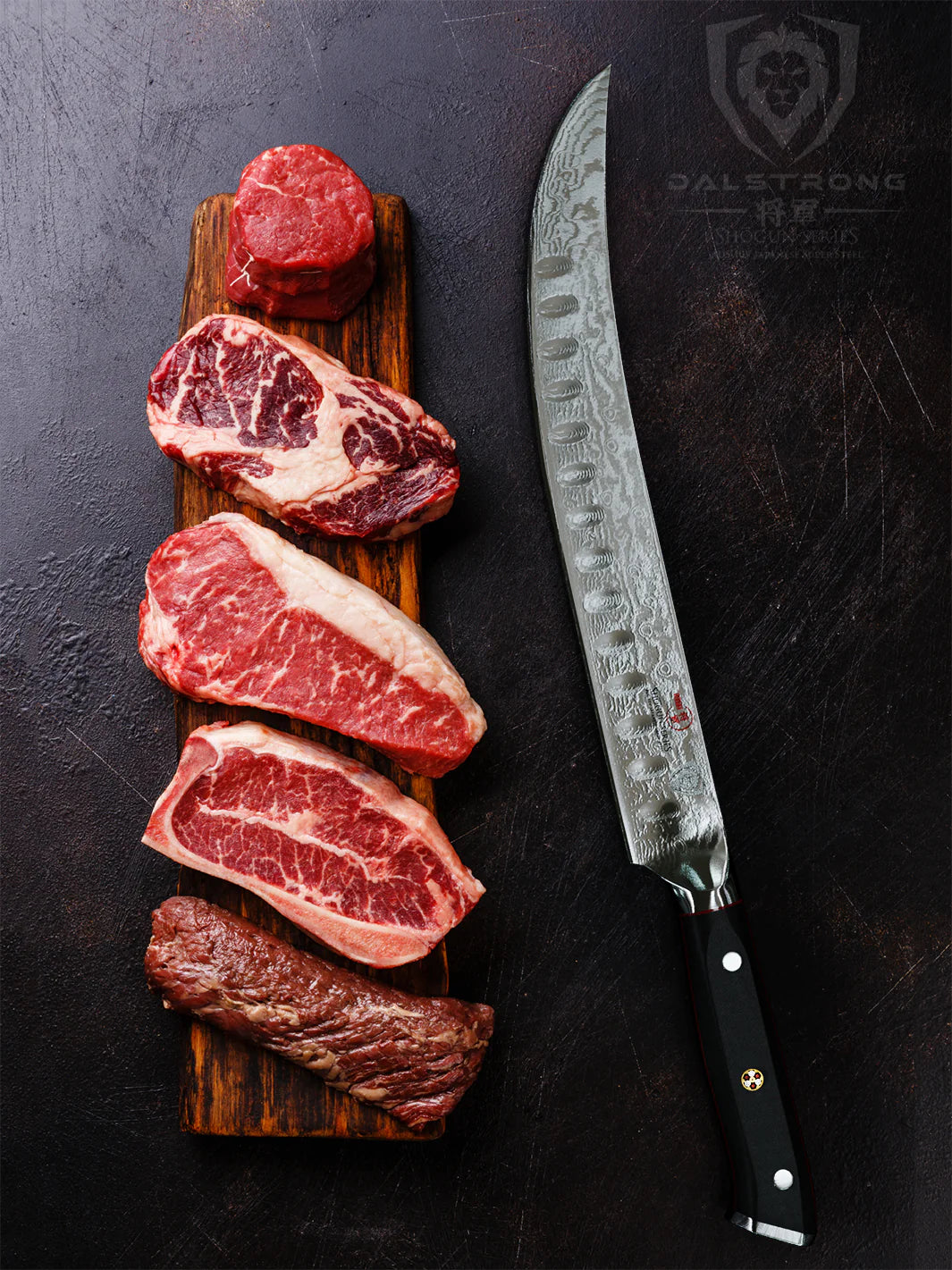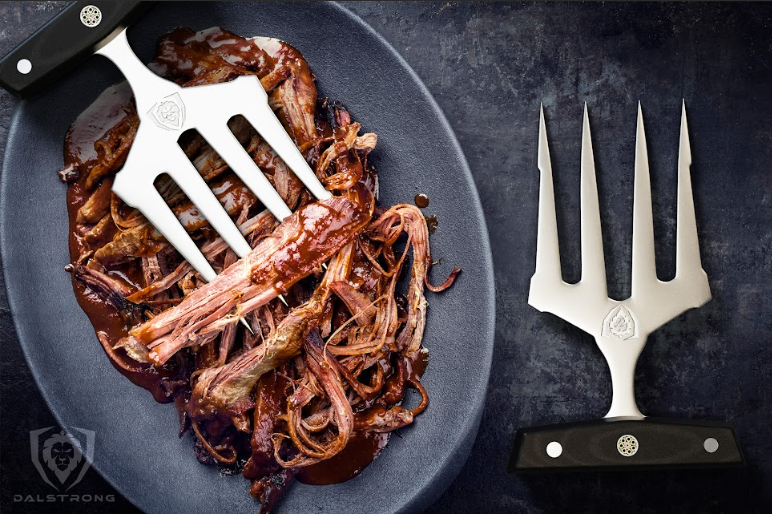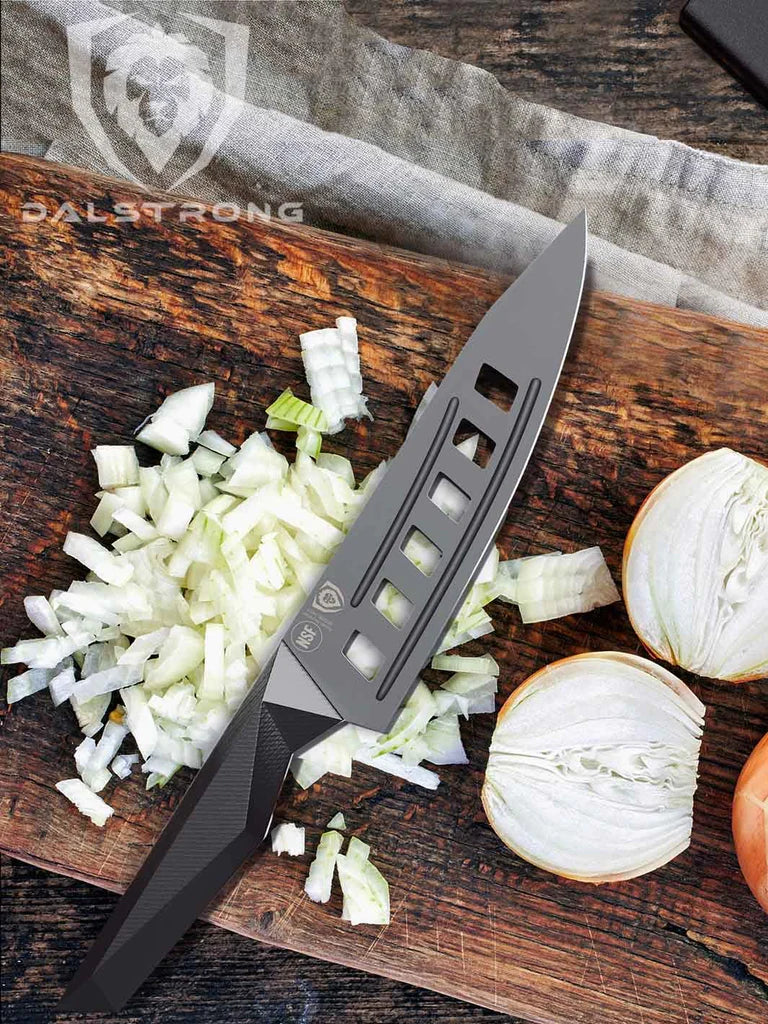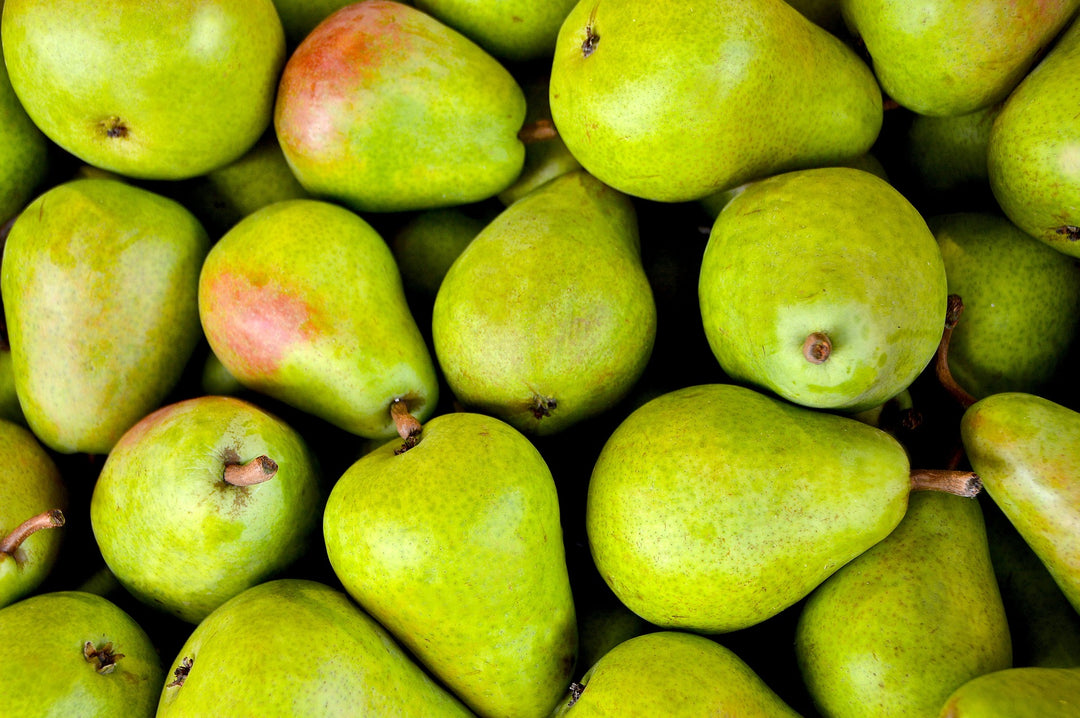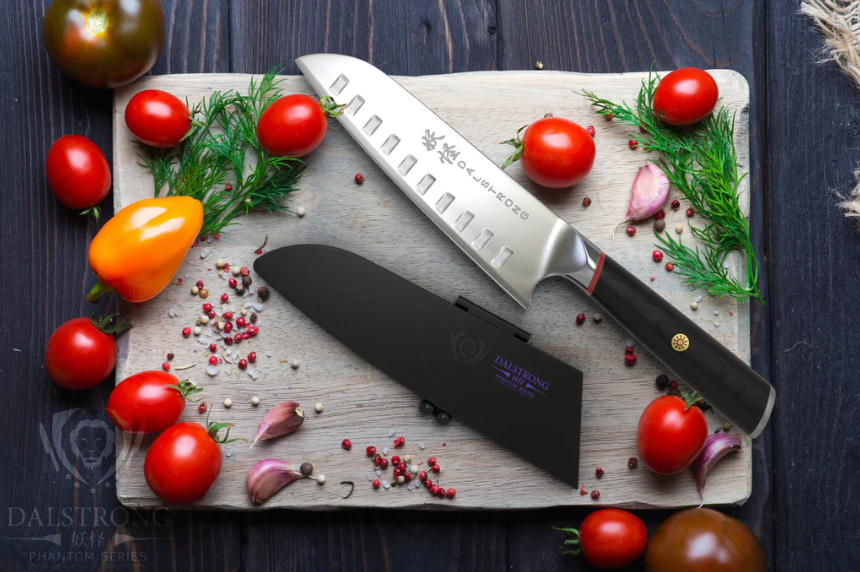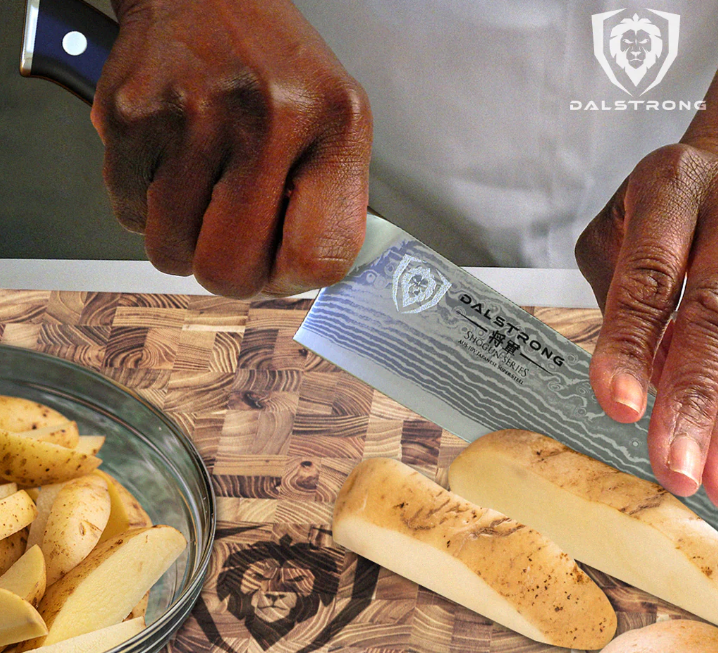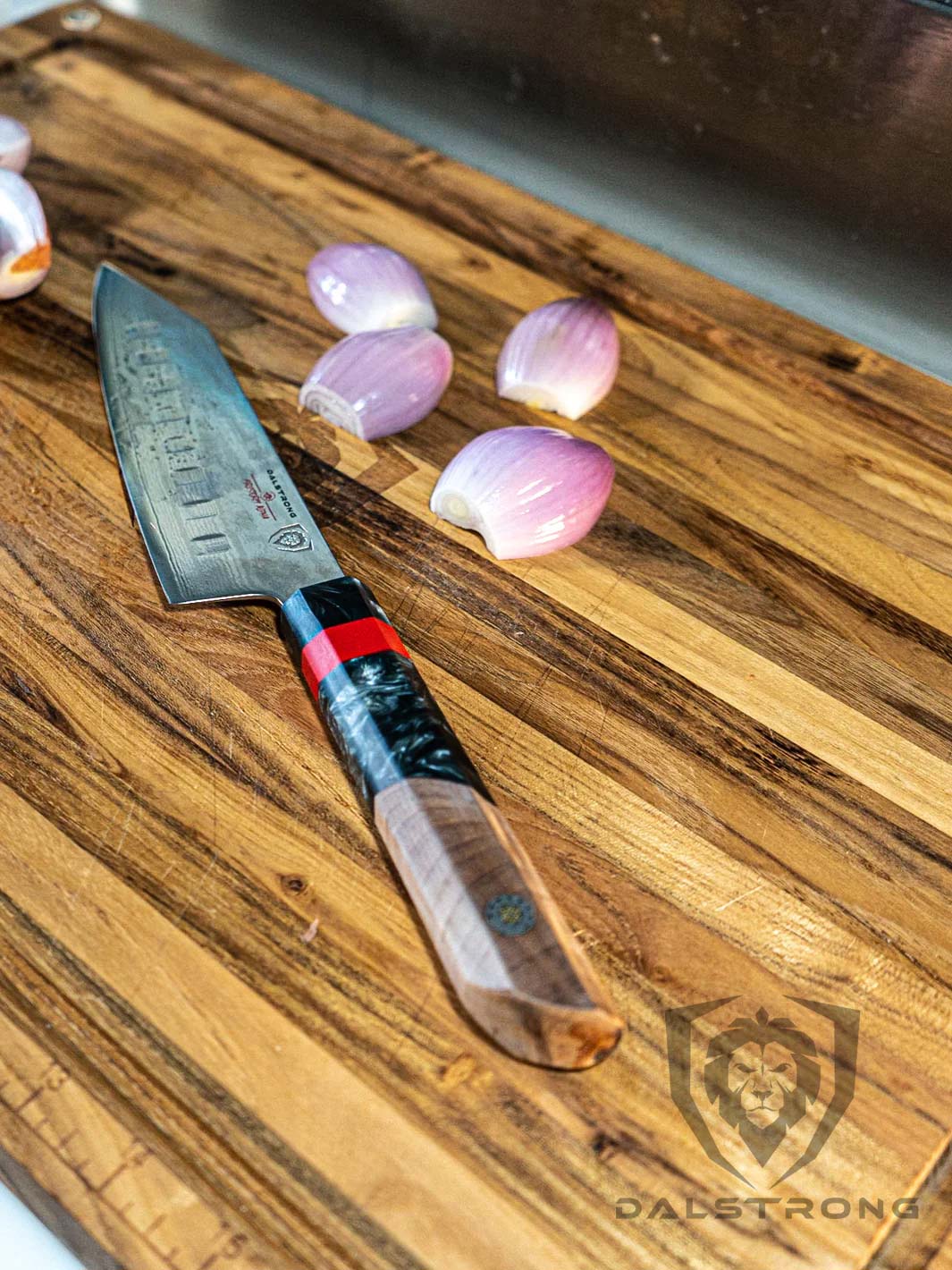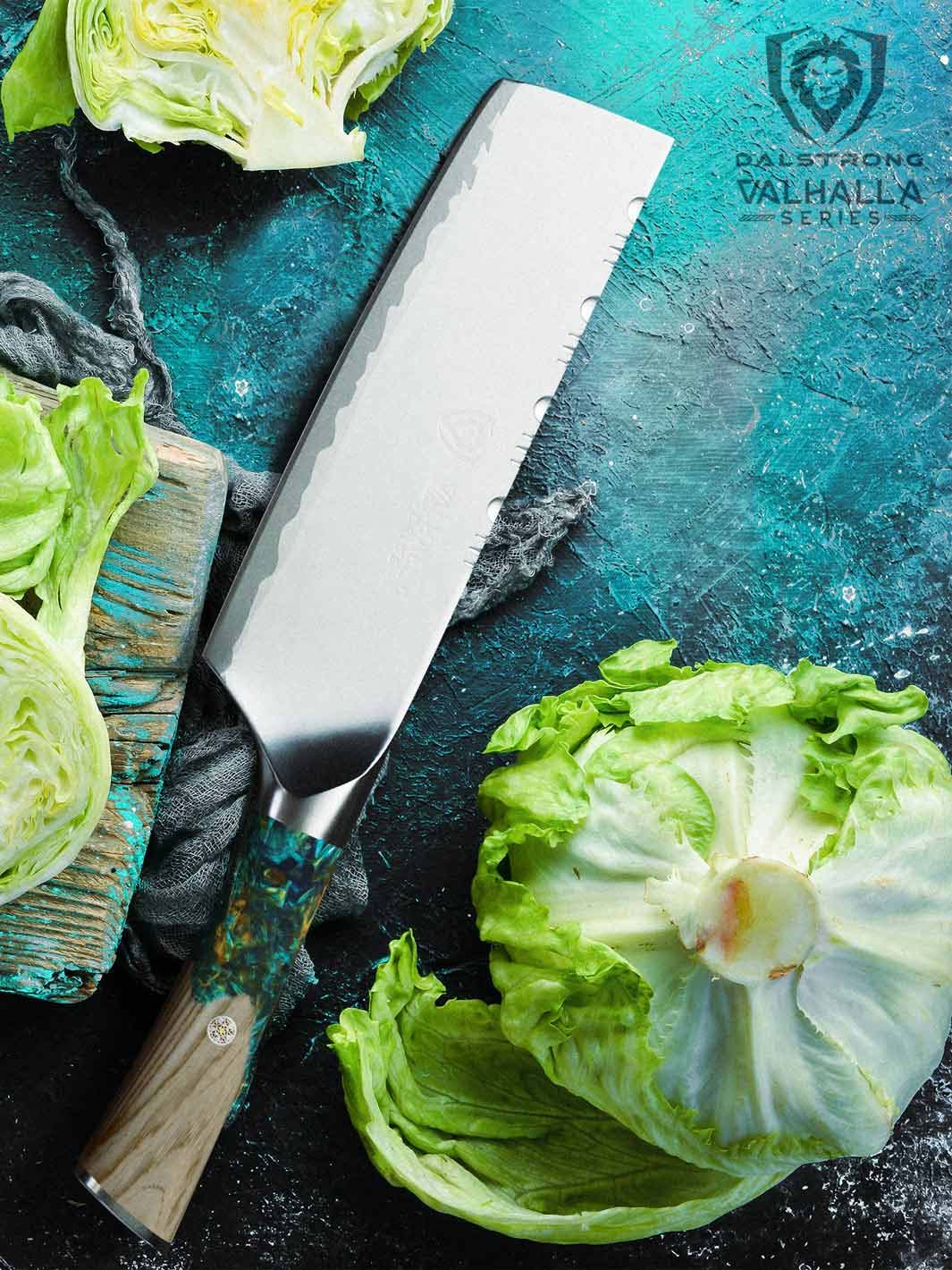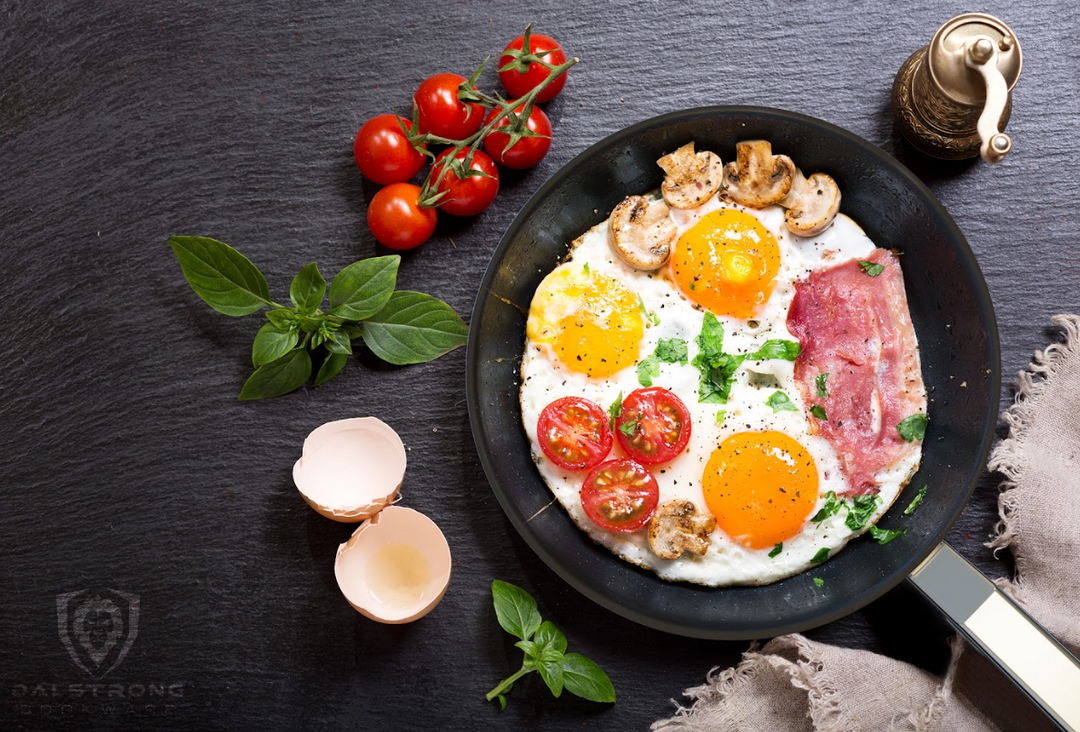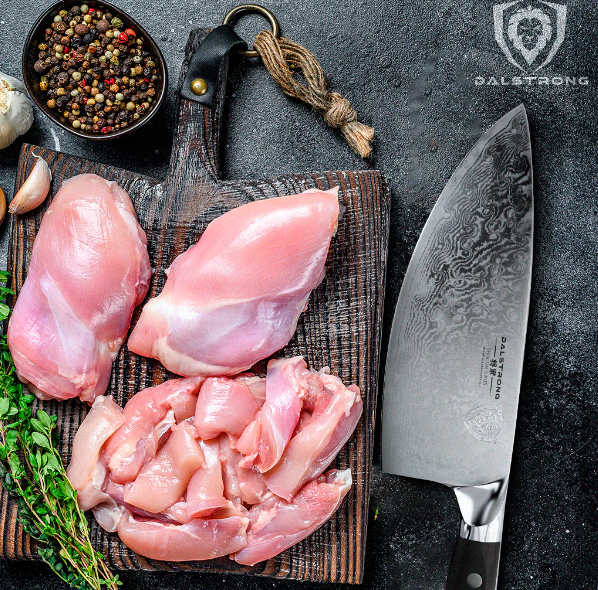How To Peel Peaches With Ease

Quick Overview: How To Peel Peaches With Ease
- Use a medium saucepan with water and use a slotted spoon to add the peaches to the pot of water with the heat on medium-high.
- Blanching peaches will soften them up. So, wait until the skin softens up.
- Use the slotted spoon to remove the peach once it is tender and add it to an ice bath (Ice cubes and water in a bowl).
- Peel off the skin once the peaches have cooled down.
- Place individual peaches on a cutting board and slice until the knife touches the pit.
- Slice downward again and remove the pit and slice again until you have two halves.
- Continue slicing till you reach the desired thickness.
Whether it’s making a decadent peach cobbler, peach salsa, or making peaches with honeyed tips for a charcuterie board, I’ve got you covered with everything you need to know about peaches. From learning to spot fresh peaches, the boiling method, how to hold the peaches to peel them, and how to immerse the peaches in an ice bath, it’s all in here, folks.
And, if you’re keen on making cocktails, homemade Peach Bellini, and Peach Melba, this is where you’ll learn about how you should cut up the fruit. So, let’s dive right into it.
Read about the difference between peaches and apples, here.
1. How To Pick The Perfect Peaches
 Paring Knife 3.5" Frost Fire Series NSF Certified Dalstrong
Paring Knife 3.5" Frost Fire Series NSF Certified Dalstrong
Smell
Fresh peaches have a very sweet, yet musky smell to them. And, that’s the first thing you want to look for. With peaches, it’s all down to the smell. So, if you come across a peach with little to no smell, that’s exactly what the taste is going to be like. So, take your time to scour for the best-smelling peaches.
Since they’re so aromatic, you should be able to smell them by just standing next to them. They smell a lot like maple syrup according to some people.
Texture
Fresh peaches are not too firm to the touch and like tomatoes, should have a soft texture to them, but also not give away when touched gently. So, if you see any bruised peaches, don’t pick them up, even though they’ll smell the sweetest. Remember to check for the bottom of each peach to make sure it isn’t leaking out the juices.
Color
A ripe peach will have a deep yellow-like color with some red undertone. Fun fact, peach, and cherry both have a dark color because they grow under direct sunlight. If you come across pale green-like peaches, while edible, they’re not going to be sweet.
So, if you intend on making fruit salsa or peach pie, they’re not the best choice. However, they’re perfect for peach pound cake, or to pack with overnight oats. They’re also great for cocktails like Peach Melba and Peach Bellini.
Shape
The rounder the peach is, the better. Peaches round as they ripen, so hold them gently because they’re really easy to bruise. If you have oval-sized peaches, you can leave them under the sun in your kitchen and they’ll ripen over time.
If you’re making peach pound cake or a fruit cake, you might want to slow down the ripening process. For that, all you’ve got to do is place them in the refrigerator for no more than a week. You can even freeze peaches.
2. How To Peel Peaches (Peeling And Boiling)

Learn how to peel peaches with me, folks. Trust me, if you have the right tools, it is not difficult. I will be dividing this into three parts to simplify it.
For the peeling method, you will need a cutting board, a sharp knife, usually a paring knife, a vegetable peeler, a slotted spoon, or a large spoon.
For the boiling method, you will need a medium saucepan of water, and a bowl of ice with water for an ice bath. We need this ice water to cool down the peaches and the cold water will help us do that.
How To Peel And Boil Peaches
Steps To Prep
- Use a medium saucepan with water or a pot of water and turn on the flame.
- Boil water for a couple of minutes. Blanching the peaches in this will soften the fruit and help in removing the skin.
- Use a sharp knife, preferably a paring knife to mark an X on the bottom of each peach that you will be boiling.
Steps To Peel
- To begin this process, use a slotted spoon or a large spoon to place the peaches into the water.
- Once you begin to notice the peach skins soften or lose their firm texture, use the paring knife to separate them from the fruit. If you can’t do this, you can do it when the peaches are cool as there is no hard or fast rule.
- Remove the peaches from the pot with boiling water and immerse them in cold water. This ice bath will cool them down in a minute or less.
- Once the peaches have cooled down in the bowl of ice water, use your hands to completely remove the peach skins. You can start this at the bottom of each peach where you made an incision with your knife.
Steps To Slice
- Place an individual peach on a sturdy cutting board.
- Hold the peach upright and use a sharp knife, preferably a chef or paring knife and begin slicing the fruit.
- Remove the knife when it touches the pit.
- Slice again at a downward angle.
- This time, remove the pit and slice downward again.
- Then, just like an avocado, twist and separate the two halves.
- Slice peaches as per your preference. They’re usually half an inch or an inch in thickness.
3. How To Store Peaches

If you want to make cocktails like Peach Melba and Peach Bellini, the best way to go about it is by making sure that you’re storing the peaches the correct way. You can free peaches and refrigerate them, too. As long as they are ripe.
Steps
- Once you’ve cut the peaches into wedges, slices, or cubes, cut up a small lemon. If you have some lime juice on you, that’s even better.
- Place parchment paper in an airtight container.
- Drizzle some of the lemon juice over the cut-up peach pieces.
- Gently toss them.
- Using a spatula or a slotted spoon, transfer the pieces to the container and close the lid.
- Label the box with the date and place it in the freezer.
- Keep them out at least 30 mins before consumption. And 20 mins before using it as a garnish to make cocktails.
4. Nutritional Benefits Of Peaches

Peaches are loaded with nutrients and antioxidants that help combat aging and some diseases. They’re also beneficial in helping with digestion as they’re fiber-rich and improve gut health. For people who are prone to digestive disorders, peaches can help in reducing inflammation. They’re seen as medicinal in Chinese medicine and used in herbal teas in Korea!
Peaches also help in improving heart health as they’re known to lower high blood pressure and LDL, which is the ‘bad’ cholesterol level. It is also believed that introducing peaches into one’s diet can help combat certain types of cancers. Peaches also promote skin health.
5. Dalstrong Tools You Would Need
1. Paring Knife 3.75" Shadow Black Series NSF Certified
This paring knife from the Shadow Black series is a personal favorite! The non-reflective titanium-nitride coating is the perfect finish on this knife as it boosts its durability ten folds. The length of this knife is perfect for professional chefs and also home cooks who want to work around peaches.
PROS:
- The blade on this knife is wear-resistant and razor-sharp for precise cuts on peaches.
- The tapered blade design adds to this knife’s robustness.
- The handle is a stunning fiber-resin military grade G10 that is highly impervious to moisture, cold, and heat.
CONS:
- The look of this knife is not everyone’s cup of tea. So, if you’re looking for something that is a little more on the minimalist side, check out Dalstrong’s Valhalla series.
- Sharpening this knife takes an additional couple of minutes than the average knife.

This knife from the Delta Wolf series did not come to play. When you’re working with fruits and vegetables that have tough pits and cores in the center, this 4-inch paring knife will get the job done for you.
PROS:
- The blade on this knife is tempered with precision for a robust and flexible finish.
- It is incredibly stain resistant.
- This knife is low maintenance and cleans incredibly easily.
- The titanium coating adds to the rugged personality of the knife.
CONS:
- The appearance of this knife might seem a little ‘flashy’ for some folks.
- You might be looking for a paring knife that has a bird’s beak to slice with more precision.

This Bird’s Beak Tourne paring knife from the Gladiator series is one of Dalstrong’s best-selling paring knives and I can totally see why that is. The blade length along with the tip of this knife makes it tremendously easy to remove the core and pits of fruits and vegetables with ease.
PROS:
- The blade is a striking high-carbon German ThyssenKrupp steel that is hardened at a staggering 56+ Rockwell.
- The blade on this knife has a satin-like finish, thanks to the hand-polished work.
- The handle is a premium quality laminated G10 Garolite that has a robust and sanitary build.
- Thanks to the blade’s added amounts of chromium, home cooks and chefs can reap the benefits of its stain-resistant nature.
CONS:
- Some folks prefer working with traditional paring knives in terms of appearance.
- If you prefer working with vegetable peelers to remove the skin of fruits and vegetables, this knife might not be the perfect fit for you.

This precision-forged chef’s knife from the Gladiator series is a well-loved product! And, if you’re what I like to call, a Dalstrong Pro, you probably own a knife from this series. This knife is made with German ThyssenKrupp steel that is hardened at a staggering 56+ Rockwell.
Pros:
- This knife has a tall blade that offers added knuckle clearance to make chopping and slicing feel like a walk in the park.
- The added chromium in the blade give it a robust, stain-resistant finish.
- The blade has a satin-like finish, boosting its luxurious appearance ten folds.
- The handle is triple riveted for all the durability that you need.
CONS:
- If you like working with knives with a longer or shorter blade, this knife might not be the right fit.
- Some folks prefer working with vegetable peelers and paring knives.

Who doesn’t love a knife set, especially when it’s from the Shogun Elite series? This paring knife set is made with AUS-10V Japanese super steel core and are hardened at a solid 62+ Rockwell.
PROS:
- Made with 67 layers of Damascus that are sharpened with Dalstrong’s Diamond Detailing method (D3).
- The blade is rust and corrosion-resistant so your knife can stay super clean for added periods of time.
- I have got to say it – The combination of these 3 paring knives looks absolutely breathtaking.
- The spine of this blade is hand-polished giving you a robust and sturdy grip that is also very comfortable.
CONS:
- If you’re looking for something more striking in its appearance, I suggest the Shadow Black series and the Frost Fire series.
- You may be more comfortable working with a chef’s knife.
6. Frequently Asked Questions
How do you peel a peach without blanching it?
You can peel a peach without blanching it. All you need to do is place it on a sturdy surface such as a cutting board and use a paring knife to cut at a downward angle from the center. Once you reach the pit, simply twist the fruit. Use a sharp knife to peel off the skin and slice it as per your preference.
Do you cut the skin off a peach?
Yes, you cut the skin off a peach. To do this, you need to place a pot of water over the stove at medium-high heat and add the fruit to it. Once the peaches begin to soften and lose their firm texture, you can take them out using a slotted spoon and immerse the peaches into cold water. When they have cooled down, use a paring knife or your fingers to remove the skin.
How long do you boil a peach to get the skin off?
You don’t need to boil a peach for any more than 2-4 minutes. Sometimes, depending on the size, it takes longer than that. But, large peaches don’t take any more than 4-6 minutes.
Can you peel peaches without boiling?
Yes, you can definitely peel peaches without boiling them. Simply use a paring knife to do so. A paring knife with 2 to 4 inches of blade length can get the job done easily.


































































































































































